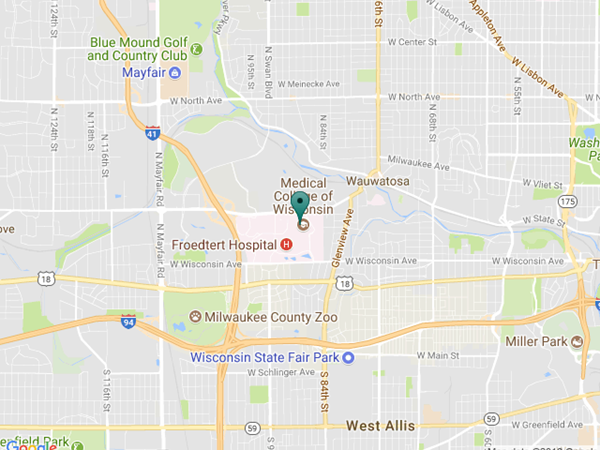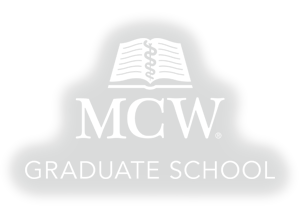Applying for Jobs
CV & Resume
- Font: Easy-to-read type (Cambria, Times New Roman, Arial, etc.), avoiding fancy and often difficult-to-read fonts. Type size should be approximately 11 or 12 point, through your name at the top of document may be increased to 14pt, if desired.
- Bold / Underlining: Some use of bold or underlining face type may enhance your document and highlight the part you would like readers to get attention on.
- Italics: Italics should be reserved for “musts” (i.e., summa cum laude, magna cum laude, cum laude) or names in references, journal titles, etc.
- Abbreviation: All organizations should be spelled out as your reader may not be familiar with all organizations. If you will repeat the organization couple times in the CV, the first time you mention should be the full name of organization. After that, you can start using the abbreviation to refer the organization.
- Periods: The only place for periods is at the end of a complete sentence or following an annotated reference. Do not use at the end of items in a list.
- NO Typos.
- Only include relevant experience, skills, and accomplishments, NOT include all past experiences
- Is concise, consistent in format and has a clear narrative and direction
- Reference should be in a separate page.
- Bullet accomplishments, include impact statements, show results.
Header: Use the same style for your cover letter. Include your name, permanent or current address, one phone number, and one email. You may include a website i.e. LinkedIn that presents you in a professional manner.
Professional Profile/Qualifications: Usually 2-3 sentences or list 2-4 bullet points that summarize your history, background and unique qualifications, tailored to the position.
Education: Use Areas of Expertise or Emphasis to communicate your research topic area, or method expertise for non-specialized audiences. Only include topics that are relevant to the position. Depending on when you graduated and the relevancy to the position, your education can be at the top of the end of your resume.
Experience: This experience may include all your experiences, paid and unpaid, volunteer, community services or professional. Analyzed each experience with regard to the skills abilities, leadership positions and accomplishments gained. Quantify the statements, where possible, and use action verbs. Organize the sections of your CV or resume with the most relevant sections first. For example, teaching position, you may want to list teaching experience on the top.
Honors/Awards/Grants: All awards and honors received should be listed with year, award titles, institution (organization). Grant should include your role, the funding agency/institution, amount (if application), title and date.
Skills: It may include laboratory skills, technical skills, foreign language, computer, research skills and others. Aligned skill set with job requirement and qualifications.
Presentations/Publications: List most recent accomplishments first using the citation style of your discipline (APA, MLA). If publication in under review, under contract or revised and resubmitted, they typically can be listed in the publication section so long as the stats is clearly marked.
Cover Letter & Statements
A Cover letter is one –page document that provides context and in depth examples of your skills, knowledge, experience and fit for the position. It can be 3 to 4 paragraphs.
First Paragraph (Purpose)
- State why you are writing, the position at the company you are applying for, and how you found out about the position.
- If referred, be sure to include the name of the referral
- Demonstrate briefly your knowledge of the company-“Why them”, and outline your unique qualifications for the job.
Second/Third Paragraph (Background & Qualifications)
- Focus on two to three particular relevant qualifications from the position description, and elaborate on the details of your experiences or skills that would be of special interest to the employer and present a good match for this role
- Use the second or third paragraphs to answers the questions-“Why you”, and even highlight how this position fits into your overall career plan.
Third/Forth Paragraph (Request for Action)
- Close your letter with confidence by briefly summarizes your skills (technical and soft skills) and how your qualifications match the position.
- Express your interest in further discussing your background and the position with the employer.
- Lastly, thanks the employer in advance for employer’s consideration.
Resources
NIH-Office of Intramural Training & Education:
- Cover letter (PDF)
- Writing letters of application for academic positions
- Writing a Winning Cover Letter (PDF)
- UCLA Career Preparation Toolkit: Cover Letter Template (PDF)
- UCLA Career Preparation Toolkit: Academic Cover Letter Template (PDF)
- The Chronicle of Higher Education: Before You Write a Cover Letter for a Nonfaculty Job, Try This Exercise
It is a summary of your research accomplishments, current work, and future direction and potential of your work.
A research statement includes:
- Prior and current research projects
- Funding history, research goals, potential outcomes, and future direction
- Requirements for laboratory equipment and space and other resources
- Potential research and industrial collaborations
- How your research contributes to your field- it’s relevance, distinctiveness and importance
Format
- Length: 1-2 pages, 3 at the most
- Avoids page-long paragraphs
- Divides content logically into headings, subheadings
- Makes use of bullets and white space
- Shows the benefit of careful proofreading and feedback from more advanced professionals
Resources
A philosophy of teaching statement is a narrative that includes:
- Your conception of teaching and learning
- A description of how you teach
- Justification for why you teach that way
The statement can:
- Demonstrate that you have been reflective and purposeful about your teaching
- Communicate your goals as an instructor and your corresponding actions in the classroom
- Provide an opportunity to point to and tie together the other sections of your portfolio
Components of a teaching statement:
- Educational purpose and learning goals for students
- Your teaching methods
- Methods for assessing students’ learning
- Assessment of teaching
Format
- Length: 1-2 pages, 3-5 pages for tenure level
- Use narrative, first-person approach
- Make it specific and ground your ideas in 1-2 concrete examples
- Be discipline specific
- Avoid jargon and technical terms, and try not to simply repeat what is in your CV.
- Be sincere, unique, and humble
Resources
- Teaching Statements from Vanderbilt University
- Writing the Teaching Statement
- Six Tips for Writing an Effective Teaching Statement
- UCLA Career Preparation Toolkit: Teaching Statement (PDF)
- The Dreaded Teaching Statement: Eight Pitfalls
Examples:
Diversity statement is a description of your contributions to diversity through your research, teaching, and/or service. It’s for faulty positions of all types, fellowships, grants, and other awards, and so on.
The statement includes:
- Your own philosophy or values regarding diversity and higher education
- A significant event or moment in your life when your awareness regarding inequality and difference was enhanced.
- The ways you sought or might you seek to advance equity, access, inclusion through teaching, research, and service
What if diversity statement in…
- Cover Letter: Use the last paragraph to connect your research and teaching to issues of diversity and inclusion, or other aspects of the institution’s mission
- Teaching Statement: Articulate your general approach to the classroom combined with concrete strategies/activities
Format
- Length: 1 page
- Use narrative, first-person approach
- Make it specific and ground your ideas in 1-2 concrete examples
- Introduction, example(s) of how principles applied in practice, conclusion
- Self-reflective
Resources
- The Effective Diversity Statement
- UCLA Career Preparation Toolkit: Diversity Statement (PDF)
- Diversity Statements from Yale University
- Diversity Statements from the University of Notre Dame (PDF)
- Inside Higher Ed: Breaking Down Diversity Statements
- Inside Higher Ed: Making a Statement on Diversity Statements
- Inside Higher Ed: Why Colleges Should Require Faculty Diversity Statements
Briefly describe why you are well-suited for your role in the project described in this application. The relevant factors may include aspects of your training; your previous experimental work on this specific topic or related topics; your technical expertise; your collaborators or scientific environment; and your past performance in this or related fields. * Tailor the personal statement to the application.
Personal statement includes:
- Your role in the proposed research
- Your strengths for this research or position; why you are a good fit?
- Discuss your future research direction or future career goal
- If someone is sponsoring/mentoring/collaborating with you, include this in the personal statement.
Resources
- Writers Workshop: Writer Resources from the University of Illinois at Urbana-Champaign
- Biosketch Format Pages, Instructions and Samples
- Science Experts Network (SciENcv) allows users to create an online professional profile (NIH and NSF biosketches) to share with others. Information such as education, employment, research activities, publications, honors, grant awards, and other professional activities can be included in the SciENcv profile.
Job Search Links
- Inside Higher Ed: Resiliency and Your Job Search
- LinkedIn Jobs
- LinkedIn Salary (Explore salaries by job title and location. See how years of experience, industry, location and more can impact your salary)
- Zippia.com
- Naturejobs.com
- BioForward (Searchable database of Biotech companies in Wisconsin and surrounding area)
- BioSpace.com
- indeed.com
- NewScientistJobs.com
- University of Wisconsin-Madison Research Park (List of all the University Research Park tenants)
- The Chronicle of Higher Education
- ScienceCareers.Org
- Inside Higher Ed
- PostDoc Jobs
- NPA Career Center
- HigherEdJobs
- Higher Education Recruitment Consortium
- Office if Intramural Training Education: Postdoc Positions
- Nature Jobs
- Cell Career Network
- Academic Careers Online
- Vanderbilt School of Medicine Post-Doc Search
- Pod Network
Interview Skills

MCW is pleased to offer you a free training system that features a new and innovative way to help you more effectively for a job interview. Big Interview is an online system that combines training and practice to help improve your interview technique and build your confidence. To access Big Interview, please visit: Big Interview
Please see User Instructions:
Resources
NIH-Office of Intramural Training & Education:
- Preparing for academic job interviews:
- Slides from OITE presentation (PDF)
- View videocast (video)
- Interviewing handout (PDF)
- ASBMB/BEST: Interview Skills (PDF)
- PhD Interview Questions (PDF)
- Dress for Success (PDF)
- UCLA Career Preparation Toolkit: Thank you Email Template (PDF)
- Job Interview Questions
- The Vector Impact: Uncommon Workshops/Life is Selling
Contact Us
Graduate School
Suite H2200
8701 Watertown Plank Rd.
Milwaukee, WI 53226
gradschool@mcw.edu



